Ford Mustang (1999-2004) Service Manual: Battery Cables
Removal
WARNING: Batteries normally produce explosive gases which can cause personal injury.
Therefore, do not allow flames, sparks or lighted substances to come near the battery. When charging or working near a battery, always shield your face and protect your eyes. Always provide ventilation. Failure to follow these instructions may result in personal injury.
WARNING: Keep out of the reach of children. Batteries contain sulfuric acid. Avoid contact with skin, eyes, or clothing. Also, shield your eyes when working near the battery to protect against possible splashing of the acid solution. In case of acid contact with skin or eyes, flush immediately with water for a minimum of 15 minutes and get prompt medical attention. If acid is swallowed, call a physician immediately. Failure to follow these instructions may result in personal injury.
All vehicles
1. Remove the battery. For additional information, refer to Battery in this section.
2. If equipped, unplug the engine heater intermediate connection.
3. Remove the battery ground cable harness bolt from the radiator support and release the cable harness locators.
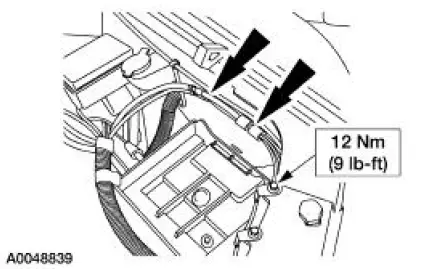
4. Disconnect the battery cable harness electrical connectors.
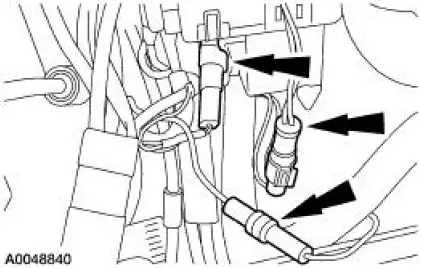
5. CAUTION: The square terminal from the battery must be installed first, followed by the round terminal from the generator. Reversing this sequence may cause circuit failure or arcing.
Remove the battery junction box nut and position the positive battery cable and generator B+ cable aside.
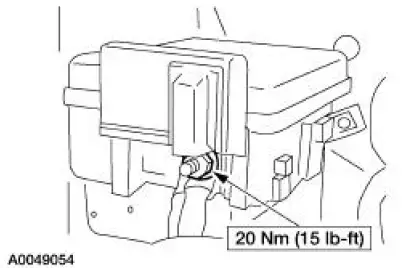
Vehicles with 3.8L and 4.6L 2V engines
6. Remove the cable harness front support bracket by removing the nut, and position the bracket aside.
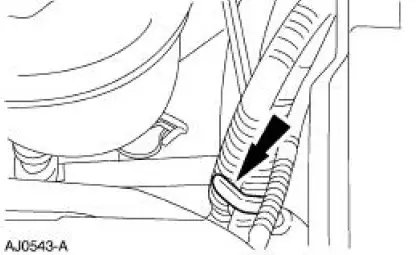
Vehicles with 4.6L 4V engines
7. Remove the nut and position the left upper battery cable bracket aside.
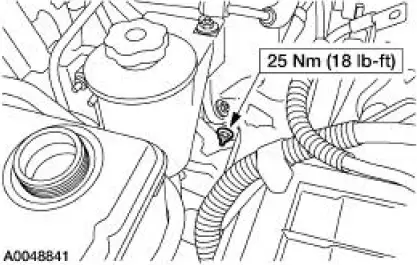
All vehicles
8. Raise and support the vehicle. For additional information, refer to Section.
9. NOTE: 4.6L 4V shown; 3.8L and 4.6L 2V similar.
If equipped, remove the block heater plug from the block heater and the harness locators from the oil pan clips.
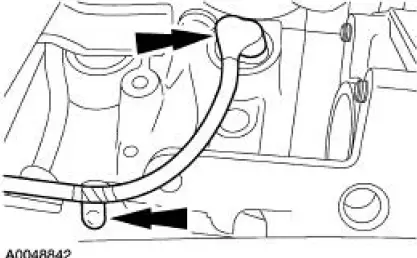
10. NOTE: 4.6L 4V shown; 3.8L and 4.6L 2V similar.
Disconnect the oil pressure sender unit electrical connector.
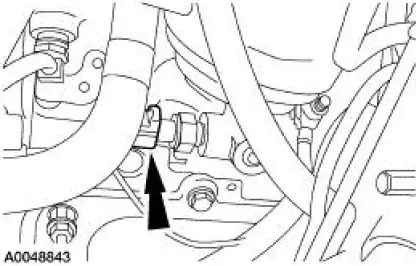
11. CAUTION: Failure to tighten the negative cable ground nut may cause ground circuit failure or arcing.
NOTE: 4.6L 2V shown; 3.8L and 4.6L 4V similar.
Remove the battery ground cable nut at the engine block.
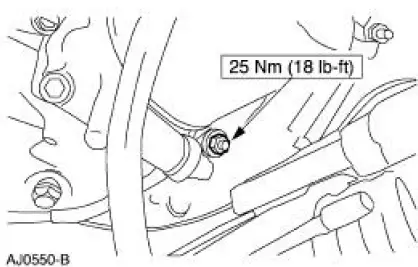
12. Remove the nut and disconnect the generator electrical connections.
- Position the cover aside.

13. NOTE: 4.6L 2V shown; 3.8L and 4.6L 4V similar.
Remove the front lower cable harness bracket nuts.
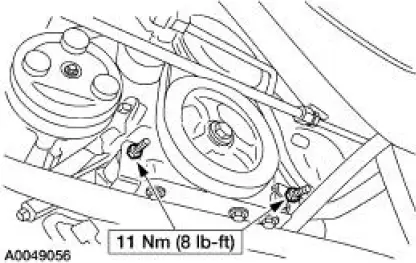
14. Pull the harness assembly downward until it clears the engine/radiator area.
15. NOTE: 4.6L 2V shown; 3.8L and 4.6L 4V similar.
Remove the right engine mount cable harness bracket nut.
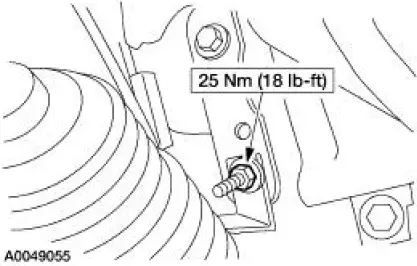
16. Remove the cover from the starter solenoid connections.
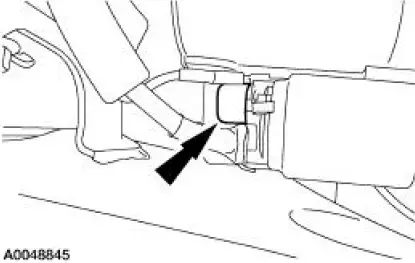
17. Remove the nuts and disconnect the starter solenoid electrical connections.
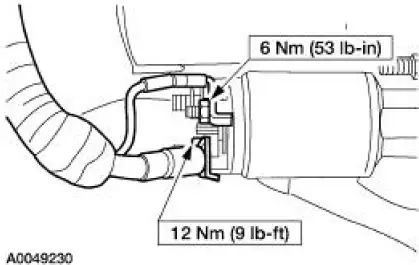
18. Pull the harness forward until it clears the motor mount, then remove the entire battery cable harness from the vehicle.
Installation
1. NOTE: When the battery is disconnected and reconnected, some abnormal drive symptoms may occur while the vehicle relearns its adaptive strategy. The vehicle needs to be driven to relearn the strategy.
To install, reverse the removal procedure.
 Battery Tray
Battery Tray
Removal and Installation
WARNING: Batteries normally produce explosive gases which can
cause personal injury.
Therefore, do not allow flames, sparks or lighted substances to come
near the b ...
 Generator and Regulator
Generator and Regulator
General Specifications
Torque Specifications
Generator
The charging system consists of the:
generator (GEN)
internal voltage regulator
The generator has an internal voltage regulato ...
Other materials:
Instrument Cluster Replacement
When it is necessary to install a new instrument cluster, contact the
Instrument Cluster Program.
Gauge Indication Systems
Tachometer
Engine rpm information is relayed to the instrument cluster from the
powertrain control module (PCM)
over the standard ...
Removal
NOTE: The convertible top hydraulic components are removed from the vehicle
as an assembly. The
hydraulic components are individually repaired and the system must be bled
before being installed into
the vehicle.
Hydraulic system
1. Unlatch the convertible to ...
Component Tests
Engine Oil Leaks
NOTE: When diagnosing engine oil leaks, the source and location of
the leak must be positively
identified prior to repair.
Prior to carrying out this procedure, clean all sealing surface areas with a
suitable solvent to remove all
tra ...
